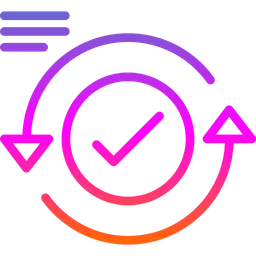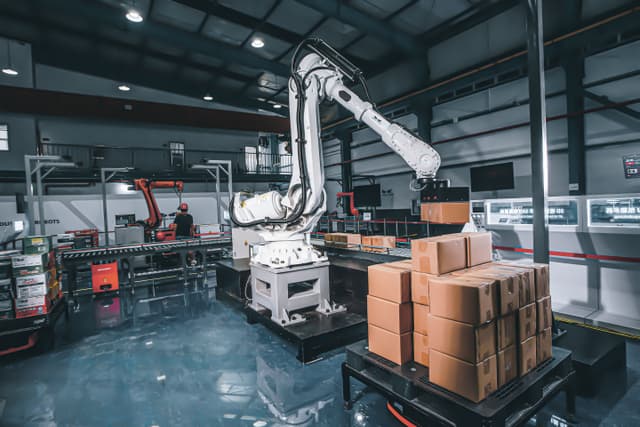MLOps Services
Streamline your machine learning workflows with Intellekt AI's comprehensive MLOps solutions

Why MLOps with Intellekt AI?
Bridging the Gap Between Machine Learning and Operations

Efficient Model Deployment
Accelerate the deployment of machine learning models into production, ensuring they deliver value faster and more reliably.

Scalable Infrastructure
We set up and configure robust infrastructure tailored to your ML needs, ensuring scalability and optimal performance.

Continuous Monitoring and Improvement
We implement continuous integration practices, ensuring that your ML models are always tested, validated, and ready for deployment.

Enhanced Business Insights
Unearth valuable insights from your data. Our solutions empower you to make data-driven decisions that enhance business performance.
Our MLOps Development Process
From Infrastructure to Continuous Improvement
- 1

Infrastructure Setup and Configuration
Set up the necessary infrastructure, including cloud resources, version control and devleopment enviornments, for MLOps implementation.
- 2

Model Development and Versioning
Develop and version machine learning models using appropriate frameworks and tools, ensuring reproducibility and traceability.
- 3

Continuous Integration and Testing
Establish automated processess for integrating code changes, running tests, and validating model performance to ensure reliability.
- 4

Model Deployment and Monitoring
Deploy models into production enviornments, implement monitoring systems, track model performance and usage metrics.
- 5

Continuous Improvement and Model Lifecycle Management
Continuously monitor and update models, manage their lifecycle, and incorporate feedback and new data to improve model performance over time.
Powering ML Workflows with Advanced Tools
Cutting-Edge Technologies in MLOps





Case studies
Our successful projects

Automated Airplane Parking System
Our client was a software developer company that specializes in airport management software for major airports in the US and Canada. They wanted to develop an AI-powered parking automation system for aircraft at the airports that relies on the existing camera infrastructure of those airports.

Automated Packing Inspection
Explore how Intellekt AI's innovative AI and computer vision system revolutionized the packing inspection process, improving accuracy, efficiency, and customer satisfaction for a manufacturing company.
FAQs
All you need to know about MLOps services
- What is MLOps?
- How can MLOps benefit my business?
- What MLOps services does Intellekt AI offer?
- How does Intellekt AI ensure the security and reliability of MLOps processes?
- Can Intellekt AI help integrate MLOps into existing machine learning workflows?
- What industries can benefit from Intellekt AI's MLOps services?
- What is the significance of MLOps in machine learning?
- How does MLOps differ from traditional DevOps?
What is MLOps?
MLOps, short for Machine Learning Operations, is the practice of combining machine learning and DevOps methodologies to streamline the deployment, management, and monitoring of machine learning models in production environments. It focuses on creating efficient workflows, automation, and collaboration between data scientists, engineers, and operations teams.
How can MLOps benefit my business?
MLOps brings several benefits to businesses using machine learning. It helps streamline the model deployment process, reducing time to market. MLOps also enhances the scalability and flexibility of machine learning workflows, allowing businesses to handle increased data volumes and adapt to changing requirements. Furthermore, MLOps ensures reliable model performance through proactive monitoring and maintenance.
What MLOps services does Intellekt AI offer?
Intellekt AI offers a comprehensive range of MLOps services, including model deployment automation, infrastructure setup and configuration, version control, continuous integration and deployment (CI/CD) pipelines, monitoring and logging, model retraining and updating, and performance optimization. Our MLOps solutions are tailored to meet the specific needs of your machine learning workflows.
How does Intellekt AI ensure the security and reliability of MLOps processes?
At Intellekt AI, we prioritize the security and reliability of MLOps processes. We implement robust security measures to protect your models and data, including encryption, access controls, and secure infrastructure. Additionally, we establish rigorous monitoring and maintenance practices to proactively detect and address any potential issues, ensuring the continued performance and reliability of your machine learning models.
Can Intellekt AI help integrate MLOps into existing machine learning workflows?
Absolutely. Intellekt AI specializes in integrating MLOps practices into existing machine learning workflows. Our team of experts collaborates with you to understand your current processes and infrastructure, and then designs and implements MLOps solutions that seamlessly integrate with your systems. Whether you are starting from scratch or looking to optimize your existing MLOps practices, we can assist you.
What industries can benefit from Intellekt AI's MLOps services?
Intellekt AI's MLOps services are applicable to a wide range of industries, including healthcare, finance, e-commerce, manufacturing, logistics, and more. Any business that leverages machine learning models in their operations can benefit from our MLOps solutions. We tailor our services to meet the specific needs and challenges of your industry, ensuring optimal efficiency and scalability.
What is the significance of MLOps in machine learning?
MLOps streamlines the end-to-end machine learning lifecycle, ensuring efficient model development, deployment, and management.
How does MLOps differ from traditional DevOps?
While DevOps focuses on software development and operations, MLOps specifically addresses the challenges and needs of machine learning workflows.
Let's discuss a solution for you

Anand Ajmera
will help you with your query
contact@intellektai.comReady to Optimize Your Machine Learning Workflows?

